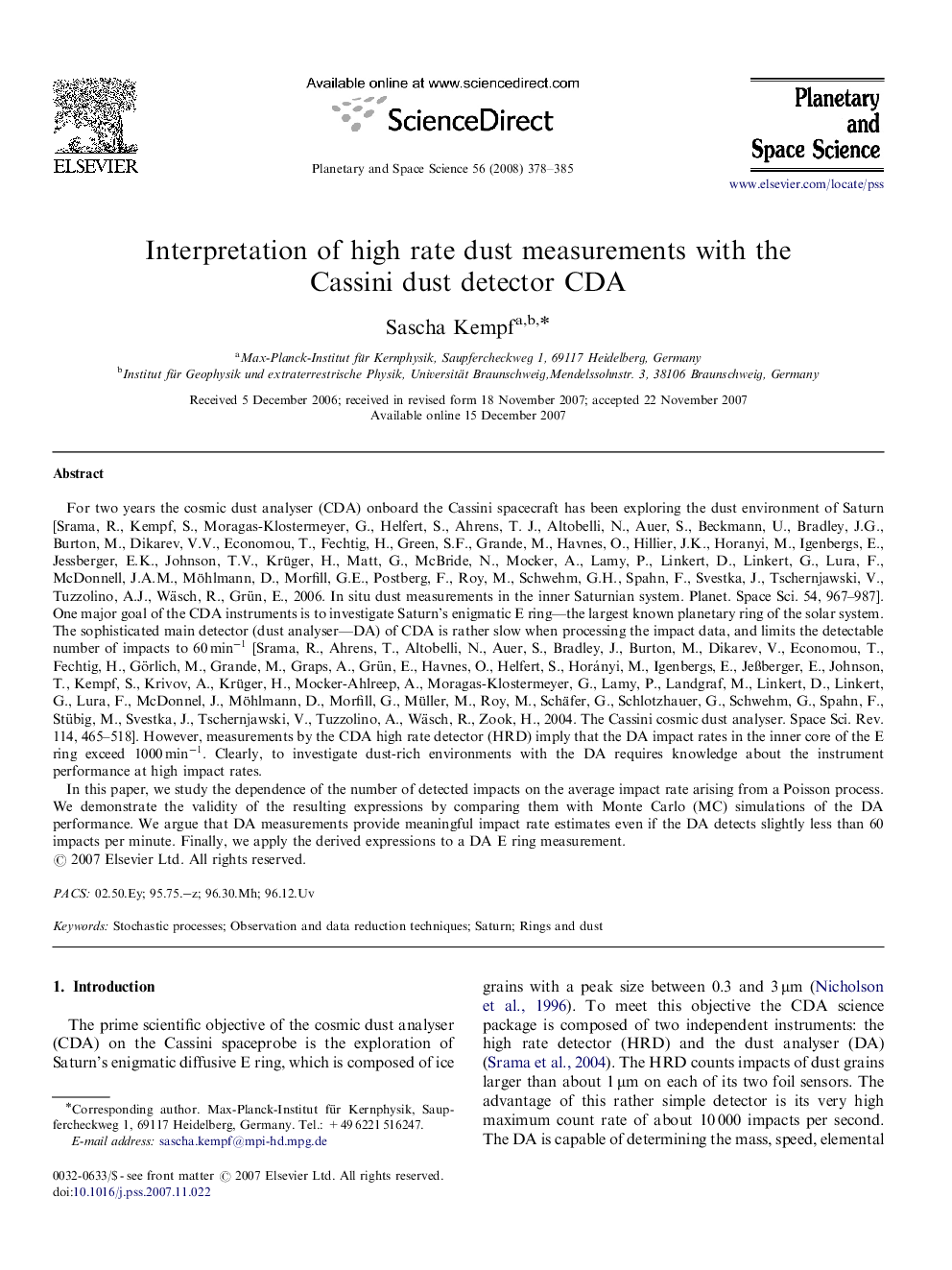| Article ID | Journal | Published Year | Pages | File Type |
|---|---|---|---|---|
| 1782339 | Planetary and Space Science | 2008 | 8 Pages |
For two years the cosmic dust analyser (CDA) onboard the Cassini spacecraft has been exploring the dust environment of Saturn [Srama, R., Kempf, S., Moragas-Klostermeyer, G., Helfert, S., Ahrens, T. J., Altobelli, N., Auer, S., Beckmann, U., Bradley, J.G., Burton, M., Dikarev, V.V., Economou, T., Fechtig, H., Green, S.F., Grande, M., Havnes, O., Hillier, J.K., Horanyi, M., Igenbergs, E., Jessberger, E.K., Johnson, T.V., Krüger, H., Matt, G., McBride, N., Mocker, A., Lamy, P., Linkert, D., Linkert, G., Lura, F., McDonnell, J.A.M., Möhlmann, D., Morfill, G.E., Postberg, F., Roy, M., Schwehm, G.H., Spahn, F., Svestka, J., Tschernjawski, V., Tuzzolino, A.J., Wäsch, R., Grün, E., 2006. In situ dust measurements in the inner Saturnian system. Planet. Space Sci. 54, 967–987]. One major goal of the CDA instruments is to investigate Saturn's enigmatic E ring—the largest known planetary ring of the solar system. The sophisticated main detector (dust analyser—DA) of CDA is rather slow when processing the impact data, and limits the detectable number of impacts to 60min-1 [Srama, R., Ahrens, T., Altobelli, N., Auer, S., Bradley, J., Burton, M., Dikarev, V., Economou, T., Fechtig, H., Görlich, M., Grande, M., Graps, A., Grün, E., Havnes, O., Helfert, S., Horányi, M., Igenbergs, E., Jeßberger, E., Johnson, T., Kempf, S., Krivov, A., Krüger, H., Mocker-Ahlreep, A., Moragas-Klostermeyer, G., Lamy, P., Landgraf, M., Linkert, D., Linkert, G., Lura, F., McDonnel, J., Möhlmann, D., Morfill, G., Müller, M., Roy, M., Schäfer, G., Schlotzhauer, G., Schwehm, G., Spahn, F., Stübig, M., Svestka, J., Tschernjawski, V., Tuzzolino, A., Wäsch, R., Zook, H., 2004. The Cassini cosmic dust analyser. Space Sci. Rev. 114, 465–518]. However, measurements by the CDA high rate detector (HRD) imply that the DA impact rates in the inner core of the E ring exceed 1000min-1. Clearly, to investigate dust-rich environments with the DA requires knowledge about the instrument performance at high impact rates.In this paper, we study the dependence of the number of detected impacts on the average impact rate arising from a Poisson process. We demonstrate the validity of the resulting expressions by comparing them with Monte Carlo (MC) simulations of the DA performance. We argue that DA measurements provide meaningful impact rate estimates even if the DA detects slightly less than 60 impacts per minute. Finally, we apply the derived expressions to a DA E ring measurement.
